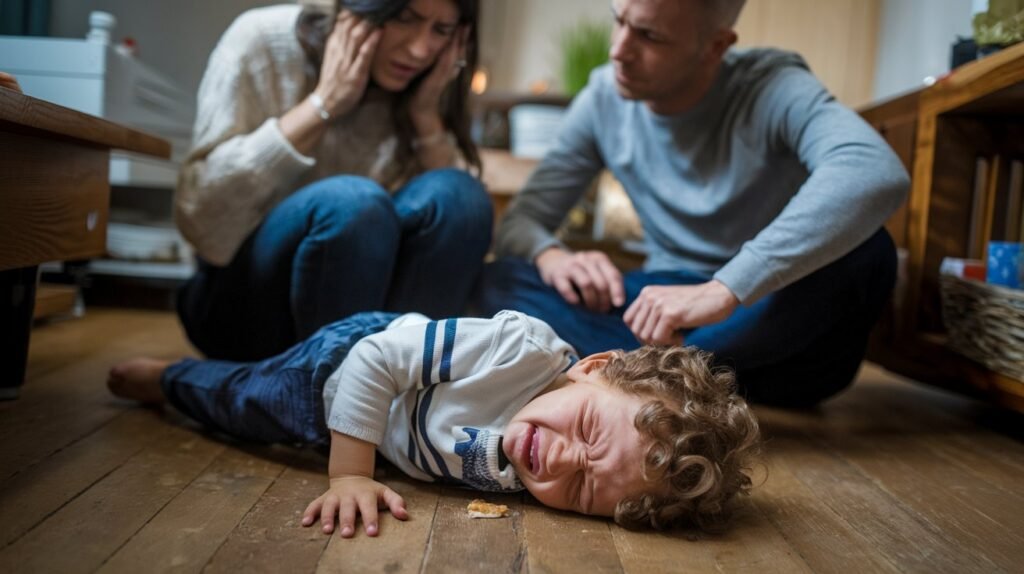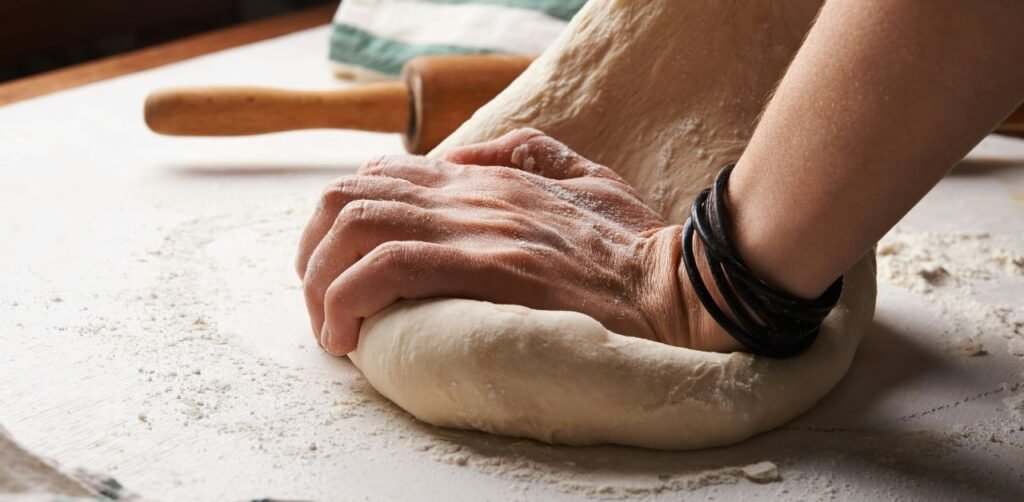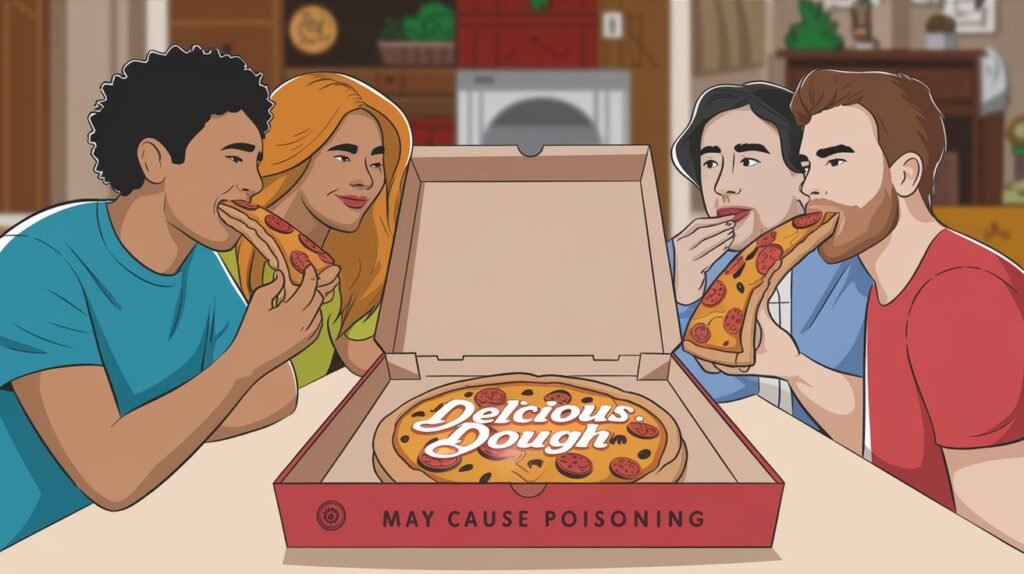Food poisoning from frozen pizza is a serious concern, although pizza remains one of the most popular and loved foods globally.
Frozen pizza has become a household staple due to its convenience and affordability and its worldwide market continues to grow.
However, this widespread popularity can mask potential risks, as improper handling, storage, and cooking can lead to foodborne illnesses.
It’s a quick meal solution that requires minimal preparation, making it ideal for busy lifestyles.
Additionally, frozen pizzas are widely available in various flavors and sizes, catering to different tastes and dietary preferences
Recent outbreaks have shown that even a favorite meal like pizza isn’t immune to contamination risks.
Food Poisoning Outbreaks from Frozen Pizza
The following is an example of real-life outbreaks caused by frozen pizza poisoning.
Nestlé Buitoni Frozen Pizza Outbreak (2022, France)

Between January and April 2022, a total of 56 confirmed cases, along with two probable ones, were linked to contaminated frozen Buitoni Fraîch’Up pizzas.
Most of those affected were children, with the average age being just 6 years old.
This outbreak turned out to be the largest E. coli-related HUS (Hemolytic Uremic Syndrome) outbreak ever recorded in France.
How Can Frozen Pizza Cause Food Poisoning?
Frozen pizzas can pose food safety risks if not handled, stored, or cooked properly.
The main concerns include bacterial contamination, such as E. coli, Listeria, and Salmonella, which can be introduced through undercooked ingredients like cheese or meat toppings.
Additionally, improper freezing or thawing can allow harmful bacteria to grow, especially if the pizza is kept in the Temperature danger zone (TDZ)
Pizza ingredients can be a source of food poisoning if they are contaminated or improperly handled.
So, let’s breakdown these ingredients that may cause food poisoning by harmful bacterial infections.
1. Meat Toppings (Pepperoni, Sausage, Ham, Chicken)

It poses the highest chance to be contaminated causing serious health effects.
This is because meats are considered TCS food that has a high likelihood of bacterial contamination
Salmonella, Listeria, E. coli are the most common bacteria that can infect meat toppings
These bacteria can be fatal and cause death, just like what happened recently after the Listeria outbreak in Michigan.
The U.S. Centers for Disease Control and Prevention (CDC) reports that Salmonella and E. coli are leading causes of foodborne illness, often associated with undercooked or poorly handled meats.
2. Seafood Toppings (Shrimp, Anchovies, etc.)
This also is highly susceptible to bacterial contamination like Vibrio and Salmonella
Raw or undercooked shrimp, which is sometimes used on pizzas, is particularly risky due to Vibrio .
3. Cheese (Especially Soft and Fresh Varieties)

Although it might have a moderate likelihood of causing food poisoning, it still can cause serious health effects.
Listeria and Salmonella are the most commonly found bacteria in Pizza’s cheese.
soft varieties like mozzarella, can be a source of Listeria and Salmonella, especially if made from unpasteurized milk.
Here comes the cruciality of proper selection of food suppliers. We have to be sure that these foods came from a trusted source.
Another significant risk factor is that Listeria can survive refrigerator temperatures.
4. Dough

Raw or undercooked dough poses a risk of E. coli contamination, primarily due to the flour used, which can carry bacteria from the farm.
E. coli outbreaks linked to flour have occurred multiple times in the U.S. and Canada.
One example is what happened on July 11, 2019, when E. Coli infected 21 persons. Three of them were hospitalized.
How to Avoid Food Poisoning from Frozen Pizza:
It will not be the first time for us to cover this part.
You can learn more by reading this post on how can food handlers control cross-contamination hazards.
But it will be good to mention some small tips that anyone can implement to reduce the risk of being infected.
To prevent food poisoning from frozen pizza, it’s important to follow key food safety practices throughout the pizza’s life cycle, from selection to consumption.
1. Proper Selection of Food Suppliers
Choose reputable suppliers who follow strict food safety standards.
Ensure they have proper certifications like HACCP or ISO, which help prevent contamination during production.
2. Proper Cooking
Always cook frozen pizza to the recommended internal temperature of 165°F (74°C) to kill harmful bacteria.
This will avoid falling in the TDZ which is ideal for bacterial growth.
Use a food thermometer to check that the center and toppings are thoroughly
3. Proper Storage
Store frozen pizzas at -18°C (0°F) or lower to keep them safe.
Never let the pizza sit out for extended periods, as this can allow bacteria to grow.
4. Proper Thawing
If you need to thaw pizza before cooking, do so safely by using the refrigerator or microwave.
In this post, you can learn more about the ideal reheating techniques and how to use them.
Avoid leaving it out at room temperature, as this can encourage bacterial growth.
5. Proper Packaging
Ensure the pizza packaging is sealed and intact.
Damaged packaging can allow bacteria to enter, contaminating the product.
6. Hygiene Practices
Wash hands, utensils, and surfaces thoroughly before handling frozen pizza to avoid cross-contamination.
Keep raw and cooked food separate to prevent the spread of bacteria.
Conclusion:
Previous incidents can prove that food poisoning from frozen pizza is very likely.
Preventing This unwanted event requires a combination of proper food handling and safety practices.
From selecting trusted suppliers to ensuring proper cooking, storage, and thawing, every step plays a crucial role in minimizing the risk of contamination.
By following these guidelines, you can safely enjoy eating Pizza and greatly reduce the risk of food poisoning.



